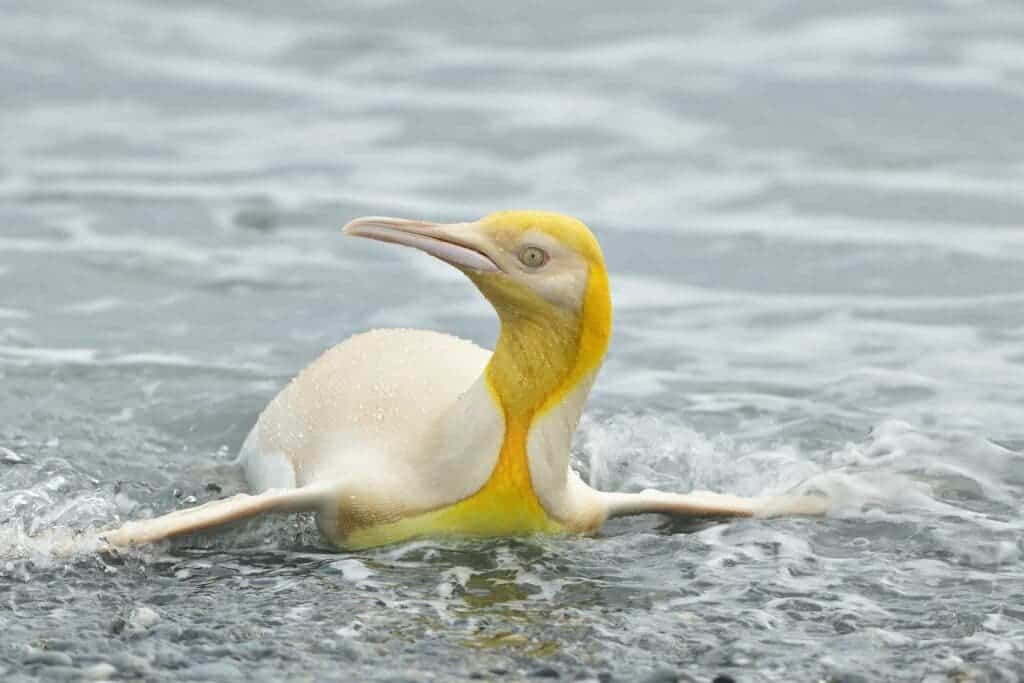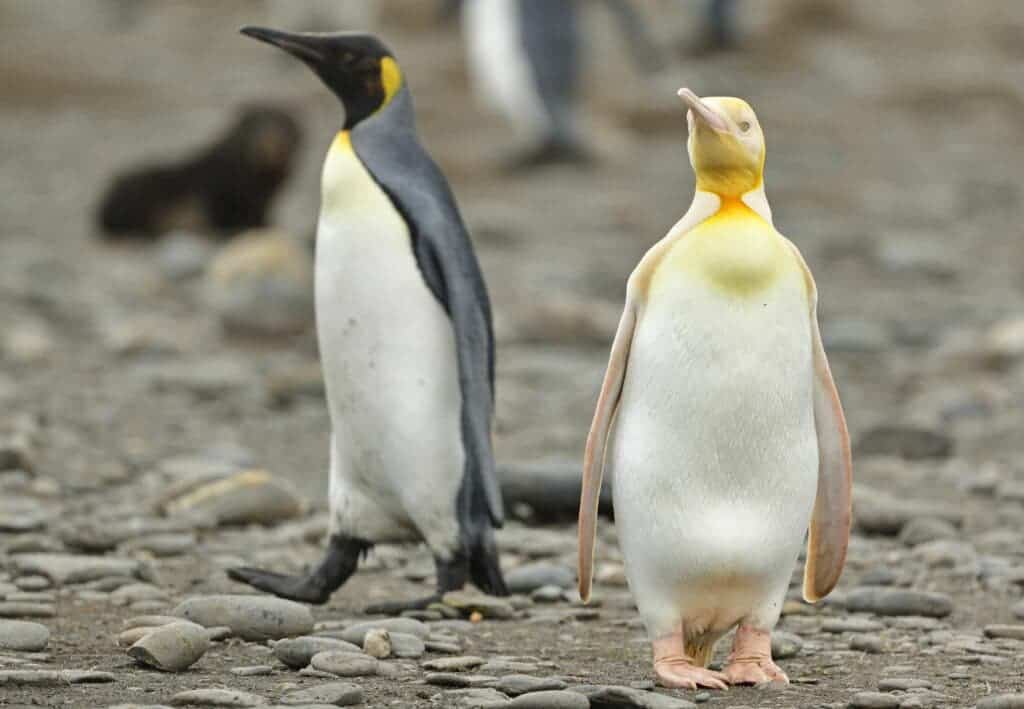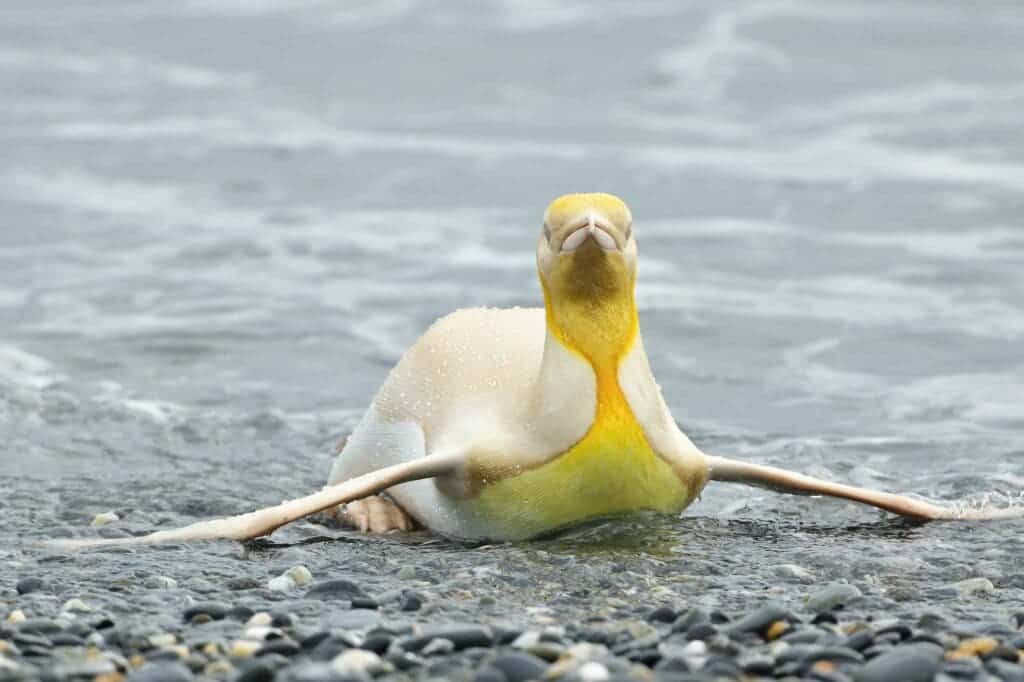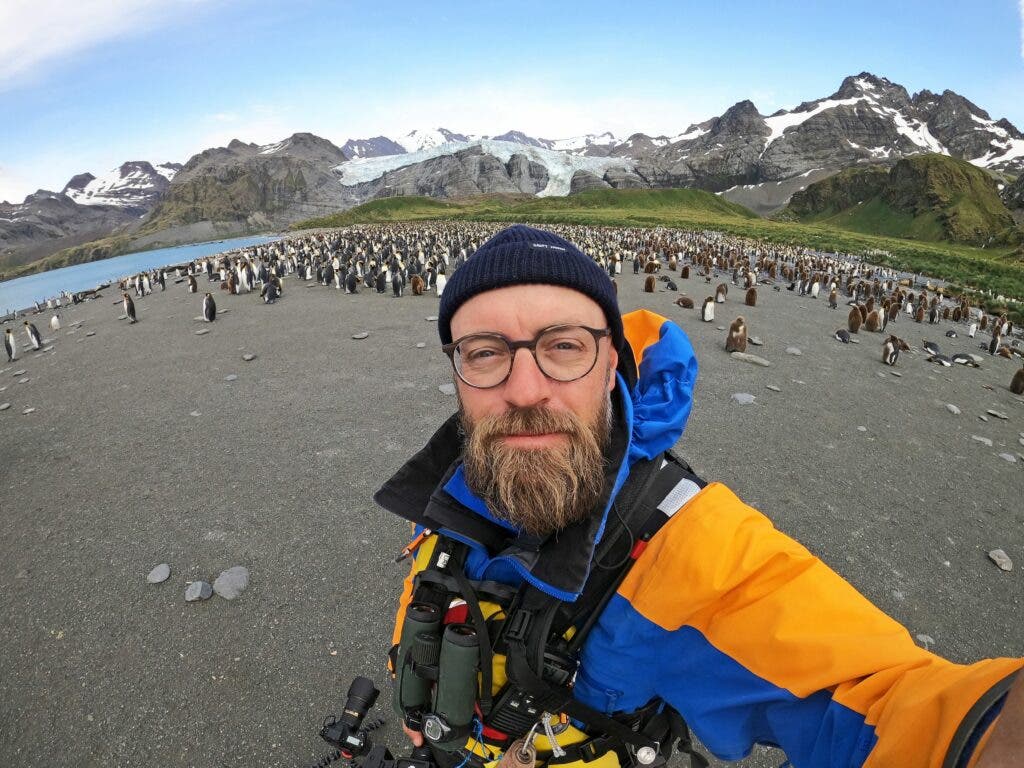
Belgian wildlife photographer Yves Adams was on a two-month expedition in the South Atlantic towards Antarctica at the end of 2019 when he came upon a dazzling sight that made him rub his eyes. There he was, as a lone dandelion, a “never before seen” yellow penguin among a colony of 120,000 king penguins. These breathtaking photos speak for themselves.

The unusual bird was caught on camera during the expedition’s stop on an isle in South Georgia. It wasn’t hard for Adams to notice something was off when he noticed a yellow stripe in a sea of black-and-white tuxedos.
“I’d never seen or heard of a yellow penguin before,” Adams told Kennedy News. “There were 120,000 birds on that beach and this was the only yellow one there.”

Like albino penguins, this yellow penguin suffers from a certain pigmentation condition known as leucism. In leucistic penguins, their cells don’t produce enough melanin to turn feathers black, which instead results in this yellow/creamy color.
About 1 in 140,000 penguins are leucistic, and this colony of 120,000 strong fits the bill perfectly.

Previously, scientists found that the yellow pigment found in penguin feathers is distinct from the five other known classes of avian plumage pigmentations. Penguins use the yellow pigment to attract mates, but it’s not clear whether the distinctive plumage of a leucistic penguin makes the bird more attractive or more repulsive to potential mates.
“Penguins use the yellow pigment to attract mates and we strongly suspect that the yellow molecule is synthesized internally,” explains Daniel Thomas, a fellow at the Smithsonian’s National Museum of Natural History, who led the study that uncovered the yellow pigment in penguin feathers.
This isn’t the first leucistic penguin humans have ever encountered, but to the best of our knowledge, these seem to be the first photos documenting the condition in a penguin.
Suffice it to say, when Adams realized what was in front of him, at a distance of about 50 meters (150 feet), he immediately went bonkers.
“We all went crazy when we realised. We dropped all the safety equipment and grabbed our cameras. We were so lucky the bird landed right where we were. Our view wasn’t blocked by a sea of massive animals. Normally it’s almost impossible to move on this beach because of them all. It was heaven that he landed by us. If it had been 50 metres away we wouldn’t have been able to get this show of a lifetime,” he said.
For more amazing photos by Adams, be sure to check out his website, and follow him on Facebook and Instagram.









